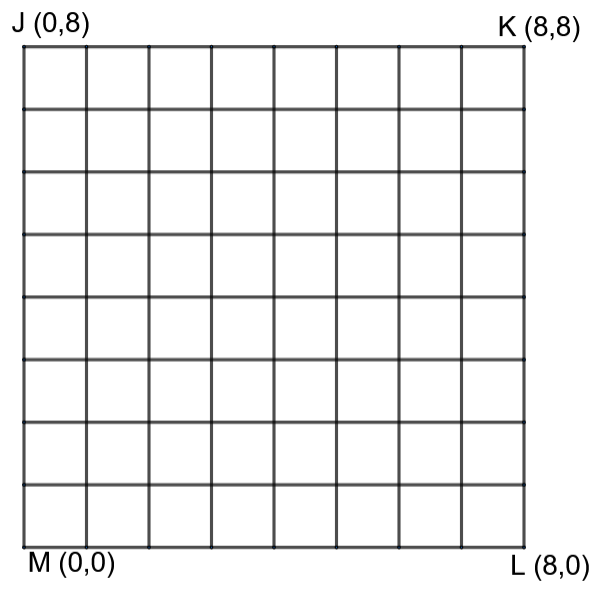Question
Question: The diagram shows a square JKLM drawn on a grid of equal squares with side 1 unit. W, X, Y are three...
The diagram shows a square JKLM drawn on a grid of equal squares with side 1 unit. W, X, Y are three moving points in the diagram. On the diagram, draw
a) The locus of the point X which is at 4 units away from KL.
b) The locus of the point Y which is at 6 units away from M.
Hence mark with the symbol ⊗, the intersection of locus of X and locus of Y.

Solution
To solve this question, we should know the distance between a point and a line and distance between two points. We know that the distance between a point (x1,y1)and a line ax+by+c=0 is given by the formula distance=a2+b2∣ax1+by1+c∣. We know that the distance between two points (x1,y1),(x2,y2) is (x2−x1)2+(y2−y1)2. In our question, by assuming the point M as origin, we can write the coordinates of other corners. By using the above formulae and simplifying them, we get the required locus. After getting the locus, we should solve them to get the intersection point.
Complete step by step answer:
We are given a square grid which has 8 small squares on each side. SO, the length of each side of the larger square is 8 units. Let us assume that the corner M is origin and the lines ML and MJ are along x and y axis respectively.
So, we can write the coordinates of the corners as
M(0,0),J(0,8),K(8,8),L(8,0).
We know that the line KL is parallel to the y-axis. Any line parallel to y-axis is of the form x=k. So, we can write the equation of the line KL as x=8⇒x−8=0→(1)
Let us assume the coordinates of the point X as (x1,y1). We are given that it is at a constant distance of 4 units from the line KL.
We know that the distance between a point (x1,y1)and a line ax+by+c=0 is given by the formula distance=a2+b2∣ax1+by1+c∣.
Using this with the point X(x1,y1) and the line KL x−8=0 and distance = 4 units, we get
4=12+02∣x1−8∣∣x1−8∣=4
Removing the modulus sign, we get a plus or minus sign.
